
Two weeks ago, many of our staff attended the New Zealand Game Developer's Conference here in Auckland. While most of the team were attendees, there were also several members who held their own talks. One of our concept artists, George, spoke about his process for making different types of concept art, and how to overcome creativity blocks. We were very interested in his perspective and found that his talk may provide some insight to our community.
If you're a Path of Exile fan, you're probably already familiar with much of George's work. He was the artist behind King Kaom's design in Act Four, many unique items, the recently released Wasteland Armour Set and much more. To summarize George's talk, he spoke about several key points: understanding the game you're working on, overcoming creativity blocks by using theme-stacking and understanding different types of concept design; Broad, Iconic and Hybrid-Iconic. 
When you work as a concept artist, it's typical that you would experience a creativity block at some point. This is especially true in situations where you are fulfilling many of the same types of tasks or working on a design that has limited room for creative freedom. A perfect example of this within Path of Exile is the sword; relatively simple objects in that they must have both a handle and a blade, but Path of Exile requires dozens of variations. Even in instances where you're working on something entirely new with fewer limits, like boss design, it can still sometimes feel difficult to create something that feels fresh and interesting. This is where creativity blocks tend to set in. As an artist, your natural desire is always to create something original and compelling, but it is important to accept that there is no such thing as an original idea. However, we can take a generic or unoriginal idea, use it as a base for a design, and then use theme-stacking in order to expand and add nuance to the idea. Effectively using this process will allow you to create something that feels new and fresh despite originating from something relatively simple. 
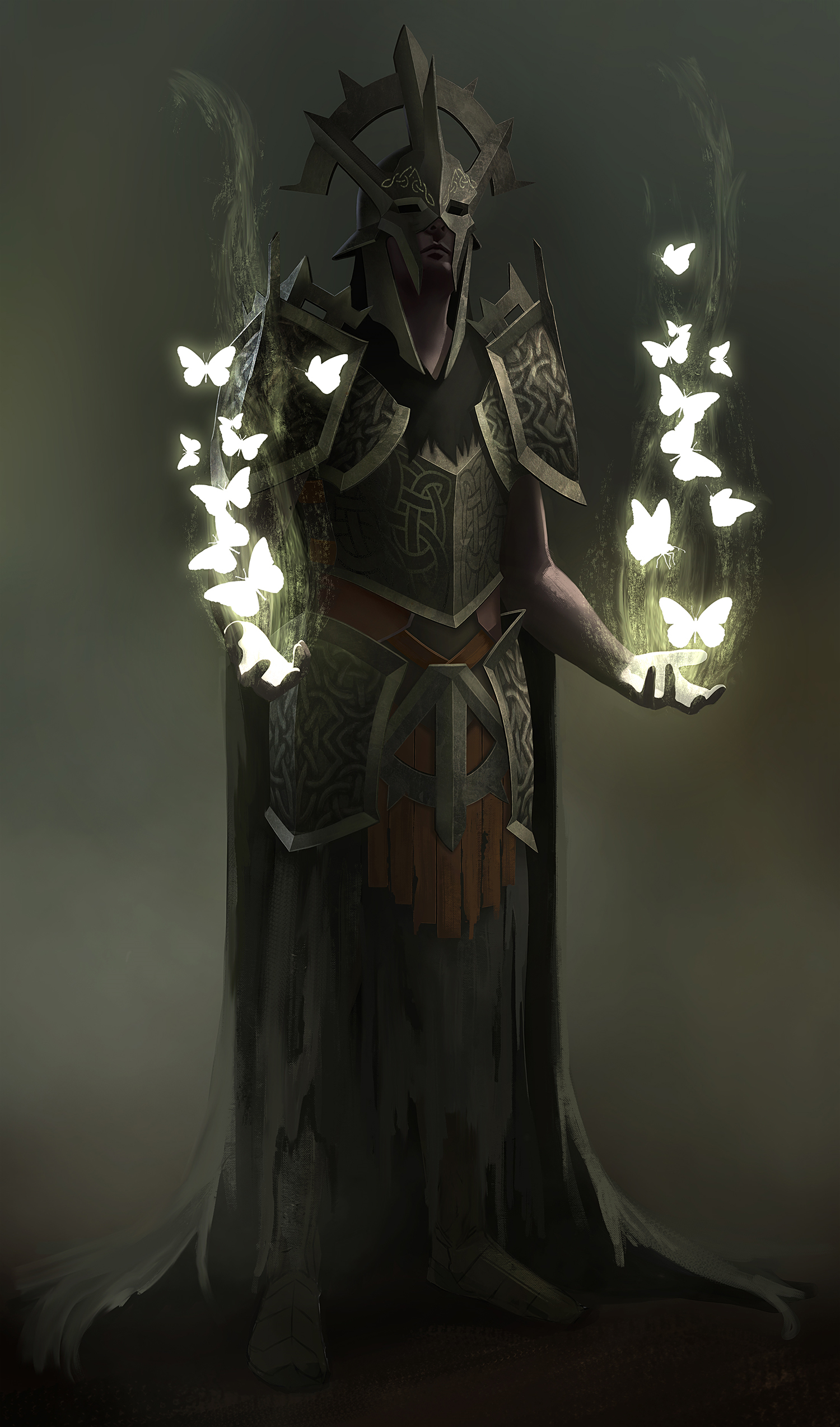
This piece is something George created in his spare time, separate to Path of Exile concept art. It serves as a good example of how theme-stacking works. It takes a basic European armour style and layers various themes to create something that looks unique. The original concept George gave himself was to create a Shaman/Warrior hybrid. The thick plate armour fits the Warrior theme, while the robes and the ceremonial helmet are designed with the Shaman theme in mind. The helmet, while still made of a hard armour-like material, takes on a shape that is more reminiscent of Shaman-style headdresses. George added a Celtic motif to the armour plates to stack an additional theme which works to serve both the Shaman and Warrior themes. The butterfly effect on the hands is a really good example of how simple theme-stacking can vastly change the way a character is perceived. The butterflies help create an identity that would be entirely different if, instead, the character had been conjuring flames or skulls. This demonstrates how starting with something simple, like a basic armour shape, and using many themes that branch out like a tree can cultivate something new. Approaching the process in small steps like this is a very useful tool for overcoming your creativity block. The more you work on it, the more original it becomes. 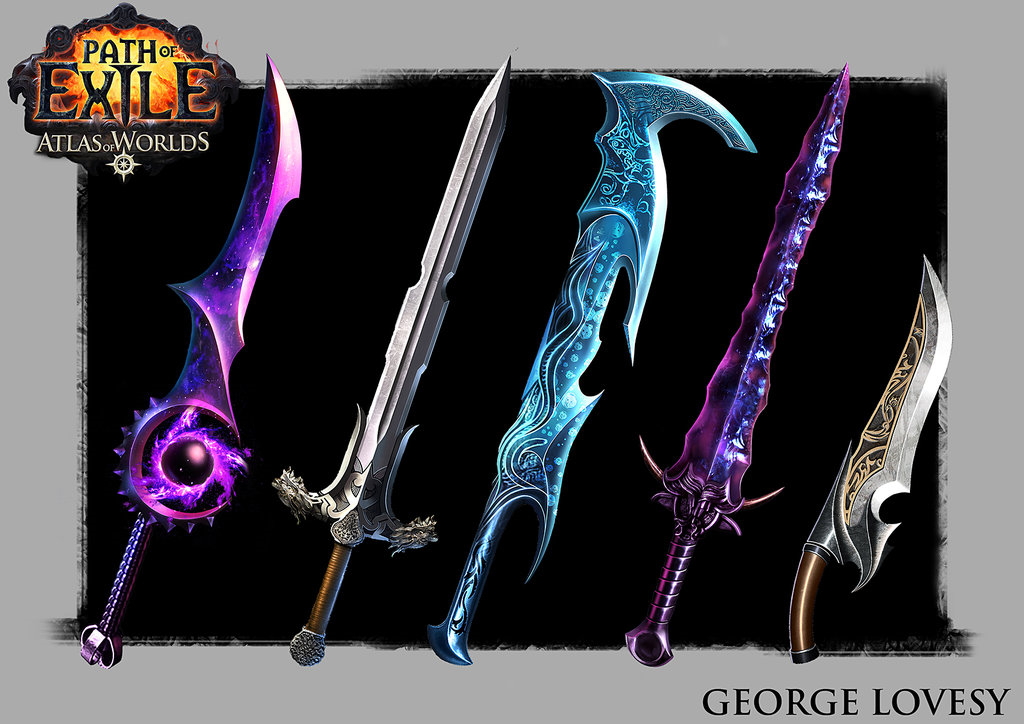
This collection of sword concept art also demonstrates how materials can be a big factor in terms of theme-stacking. Space, crystal, fire, and stone are some examples of materials that can be used in your concept to change the theme of your design. 
In George's view, concept art design falls into three categories: Broad, Iconic or Hybrid-Iconic. An Iconic concept is something that is instantly recognisable from far away, and defined by whether or not removing key components of the design would completely change how it is perceived. In Path of Exile there are many iconic designs, like Dominus with his gloves, robes and chains, Piety and her helmet, Doedre and her everything, to name a few. If you remove Dominus' gloves, robes or chains he would cease to be the character that he is. 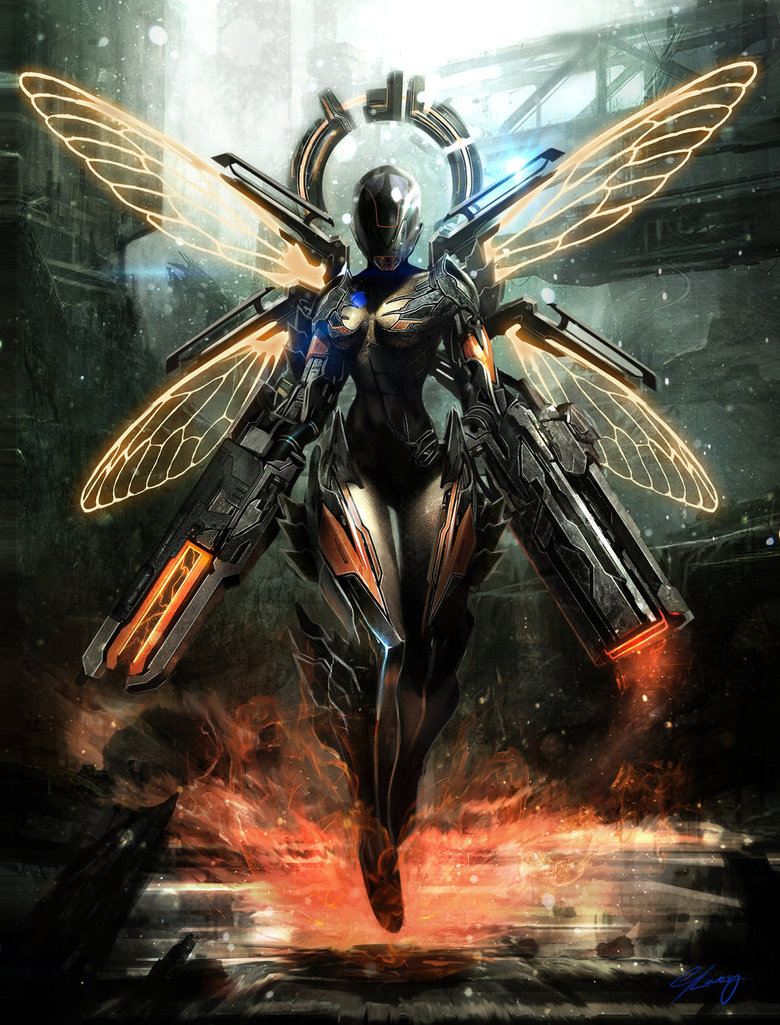
Here is another example of George's personal concept art. It further demonstrates iconic design in that if you remove the wings and halo it would change the design to the point that it ceases to be recognisably part of the original's 'world'. 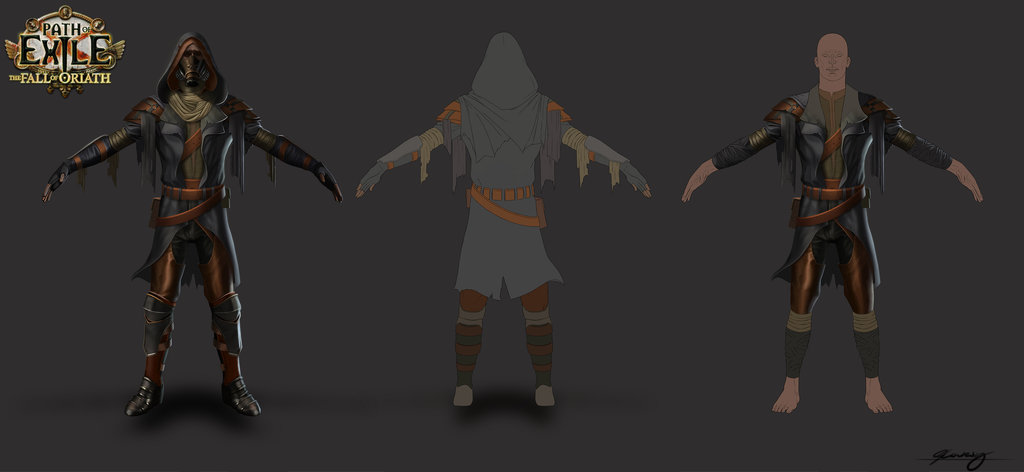
Broad design refers to concepts that fit into the game-world without standing out in their own way. A good example of this is the Wasteland Warrior Armour set. You can take away any of the individual pieces and it will fundamentally remain unchanged. It has a more subtle design that's suited to mixing with other microtransaction designs but it has elements that keep it in context with the Path of Exile realm. There are many other examples of broad concepts in Path of Exile, including monsters and NPCs that take their shapes, colours and materials from the surrounding world. Hybrid-Iconic designs have features that, if removed, change the look of the design substantially. As an example, we can look to Garukhan's concept. 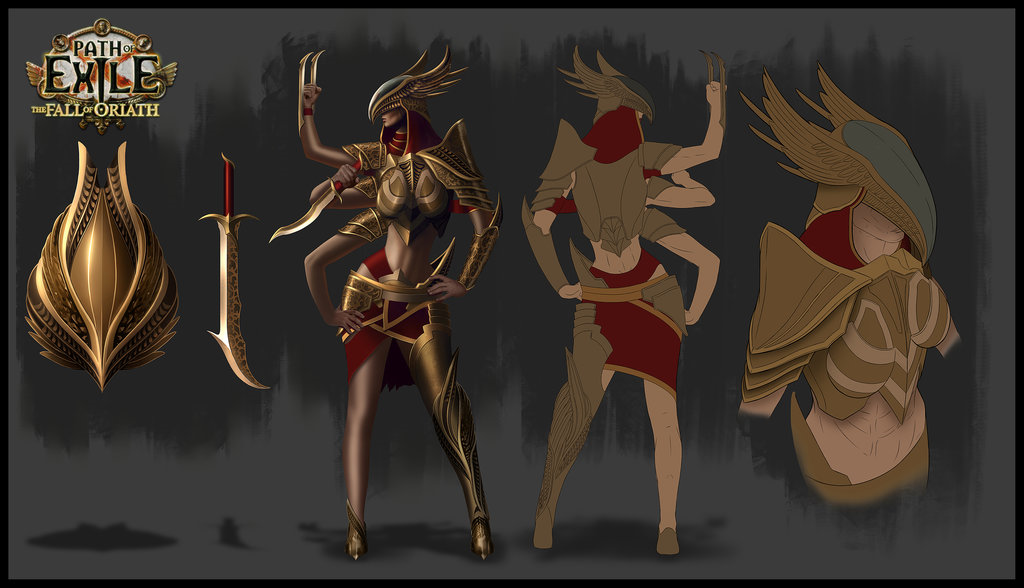
Garukhan's helmet is iconic while the rest of her armour set fits into the broad category. If you remove her helmet she becomes more generic, while her armour set could work with many other designs. As to when we use Broad, Iconic and Hybrid-Iconic designs depends entirely on the objective. For example, a new boss concept will almost always go for an iconic look as they are stand-out characters in the Path of Exile world. Microtransactions vary on the spectrum based on what role they fulfil in the store. It also depends on what the query is from Erik. For example, when the Wasteland Warrior was sent into production we knew only that we wanted something dark and sleek using a leather-like material where the individual parts could be mixed with other microtransactions - a broad concept. For example, if Erik asked for an armour set based on a bat, it would likely use many iconic features to make sure the theme was identifiable. 
Understanding the world you're working in is very important when it comes to figuring out which style of concept art to use. In Path of Exile there is a sense of realism and fantasy, which means a mix of broad and iconic art is asked for. However, if you were working on a mobile or platform game, it's likely that you would predominantly use iconic design and focus on simplified shapes, themes and colours. 
If you're experiencing a creativity block, it's important to revisit the fundamental elements of concept design. Ask yourself if the design calls for a Broad, Iconic or Hybrid-Iconic concept. Remember that there are no original ideas, so start simple and build using layered themes to create something truly unique. If you'd like to see more of George's work, check out his Facebook and Deviant Art pages. |
|
|
yee
|

|
|
(🌸=◡=)
(✿ =‿‿=)
|

|
|
wow looks cool
"FMR it's another day in paradise" IGN NEEDBLOOD
|

|
|
cool
- Season 6 Rank: 666th
Oh damn! ._. |

|
|
awesome
|

|
|
well he is just not the one I would vote for. I vote for the team that created the ULTIMATE CHAOS MTX
and if he is the man behind that, then, only then do I apologize! Sorry Sorry ! Keep em flashy red MTX coming, the numbers speak for themselves! I'm certain GGG made much more money with flashy Red stuff vs all that sober "quest reward" looking armour packs. |

|
|
Cool article, didn't realize garukhan has 3 arms on one side and 1 on the other before.
You expect me to act as something I'm not? I picked this name for a reason.
|

|
|
Epicness
|

|
|
nice
|

|





















































































































